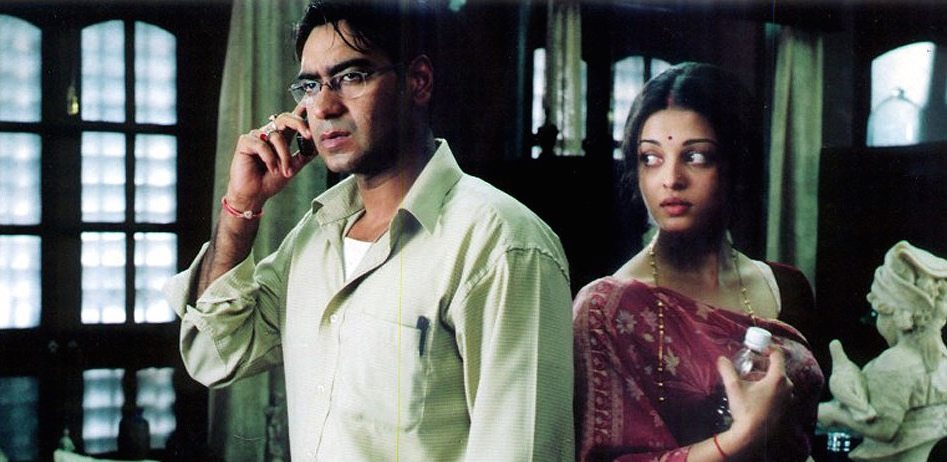Rain has always had that aura of romance about it. Poets have passionately dived into its ethereal depths and teased out its inherent poetic richness and timeless allure; waxing lyrical about the pitter-patter of raindrops that send young hearts aflutter with longings difficult to tamp down. The American poet Robert Frost once wrote, “Come over the hills and far with me/And be my love in the rain.’’
Bollywood boasts of some of the finest and hummable rain songs that capture the romantic yearnings of the hero and heroines in the first flush of youth. Who can forget the sublime and evergreen rain song, ‘Pyar Hua Ikrar Hua Hai’ from Shree 420, picturised on the romantic pair Raj Kapoor and Nargis?
The movie Manzil (1979), starring Amitabh Bachchan and Moushumi Chatterjee, has a beautiful rain scene which shows the newly-married couple in Mumbai taking a leisurely walk on the rain-drenched Marine Drive promenade, holding hands, splashing in puddles, as the monsoon winds caress their faces. Amid all the spontaneous bonhomie, the song ‘Rimjhim Gire Sawan’ by the inimitable Lata Mangeshkar plays in the background, amplifying their romantic intimacy and child-like innocence.
There are instances in movies and novels where the significance of rain is suffused with erotic overtones. In Aradhana (1970), the unmarried lovers, Rajesh Khanna and Sharmila Tagore, trapped in an abandoned house at night due to torrential rain, shed their inhibitions while the suggestive Kishore Kumar song ‘Roop Tera Mastana’ has the line ‘raat nashili mast sama hai’ which points to the impossibility of sexual restraint in this rainy weather.
The role of rain has also been that of a restorative force in human lives teetering otherwise on the brink of collapse and disintegration. In Mira Nair’s Monsoon Wedding, rain helps bring about a change of heart in the characters as they break into a dance while setting aside their past acrimony and bitterness. By some quirk of fate, rain unites two former lovers in Rituparno Ghosh’s Raincoat, and they share their bittersweet memories while it keeps pouring.

A still from Rituporno Ghosh’s film ‘Raincoat’.
Satyajit Ray in Pather Panchali vividly and poignantly captures the poetic image of rain as the adolescent Durga, chuffed to bits by the onset of monsoon, is shown performing an impromptu dance in the rain with gay abandon, watched by her younger brother Apu. Here, rain satisfies a basic human desire for reprieve from the oppressive heat and the stifling dreariness of life which subjugate human spirit.
In Akira Kurosawa’s Seven Samurai, the gnawing sense of doom starts creeping in as a bloody confrontation breaks out between the warriors and the bandits in torrential rain. An air of futility and ominousness permeates the rain scene. In James Ivory’s The Remains of the Day, based on a novel by Kazuo Ishiguro, butler Anthony Hopkins sits alone in a car, disconsolate after bidding goodbye to Emma Thompson. Not the one to cry easily, the raindrops falling on the windscreen gives the subliminal impression of tears streaming down his face.
In Bollywood, rain often becomes a sinister backdrop against which unconscionable human bestiality bursts forth. In Barsaat Ki Ek Raat (1981) starring Amitabh Bachchan in the lead, a pregnant woman played by Rakhi, who is visually challenged, is raped by Amjad Khan’s character one rainy night when Bachchan’s character is away. Poonam Dhillon in the popular movie Noorie (1979) dies by suicide after being raped by Bharat Kapoor’s character in a stormy night.
In Khaled Hosseini’s famous novel The Kite Runner, when Ali and Hassan decide to leave, the young protagonist Amir’s father breaks down after failing to control his emotions. Amir says that summer rain was rare, just as his father’s tears were rare. We don’t find tears streaming down Amir’s yes, but the rain instead provides symbolic tears through which the readers visualise this event.

A still from the film adaptation of Khaled Hosseini’s book ‘The Kite Runner’.
If rain is a harbinger of hope and a source of emotional solace to parched souls and landscapes, it can be potentially devastating when uninterrupted rains for days cut a swathe through entire cities, upending human lives and destroying crops and livestock. Initial human excitement at the first sight of rain can turn into a veritable nightmare in no time.
In Pather Panchali, rain extracts a heavy price after Durga catches a cold and falls sick. Rain and thunder pound her house all night. She succumbs to nature’s fury. Girish Kasaravalli’s Kannada film Dweepa uses rain as a strong, all-pervasive character. Nagi, a village woman, stubbornly withstands the onslaught of rain, even though her husband loses all hope of survival and her hapless father-in-law falls victim to nature’s insensate fury.
In 2013, the horrific flash floods and landslides in Kedarnath following heavy rainfall, which was also made into a Bollywood movie, revealed the unpredictable, unforgiving and sinister side of nature that catches mankind napping. In its undiminished ferocity and hideousness, it destroys human lives and property in one fell swoop leaving mortals like us wondering whether rain is a friend or foe of man in the cosmic scheme of things. The recent flood in Chennai was another example of sheer human helplessness and capitulation in the face of nature. This is the story across the world whenever rain refuses to relent and overstays.
The fact is, mankind has not been able to demystify the curious phenomenon of rain and its unpredictability notwithstanding scientific and technological advances. Rain can terrify and fascinate in equal measure. But despite its ominous ring, poets always make rain their creative muse, weaving winsome verses of passion and longing around young lovers.
Aditya Mukherjee is a senior journalist based in Delhi.
Featured image credit: Pariplab Chakraborty

